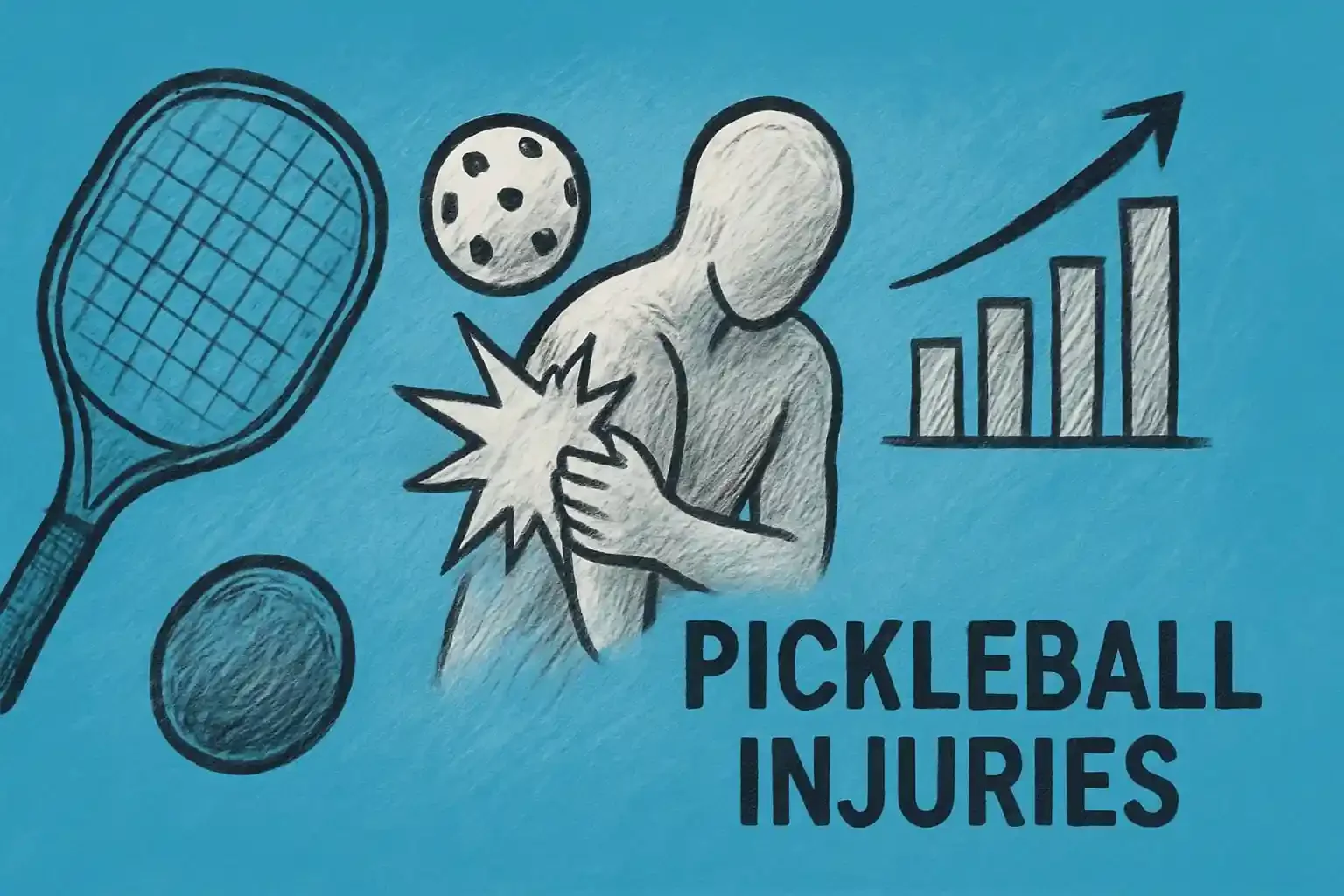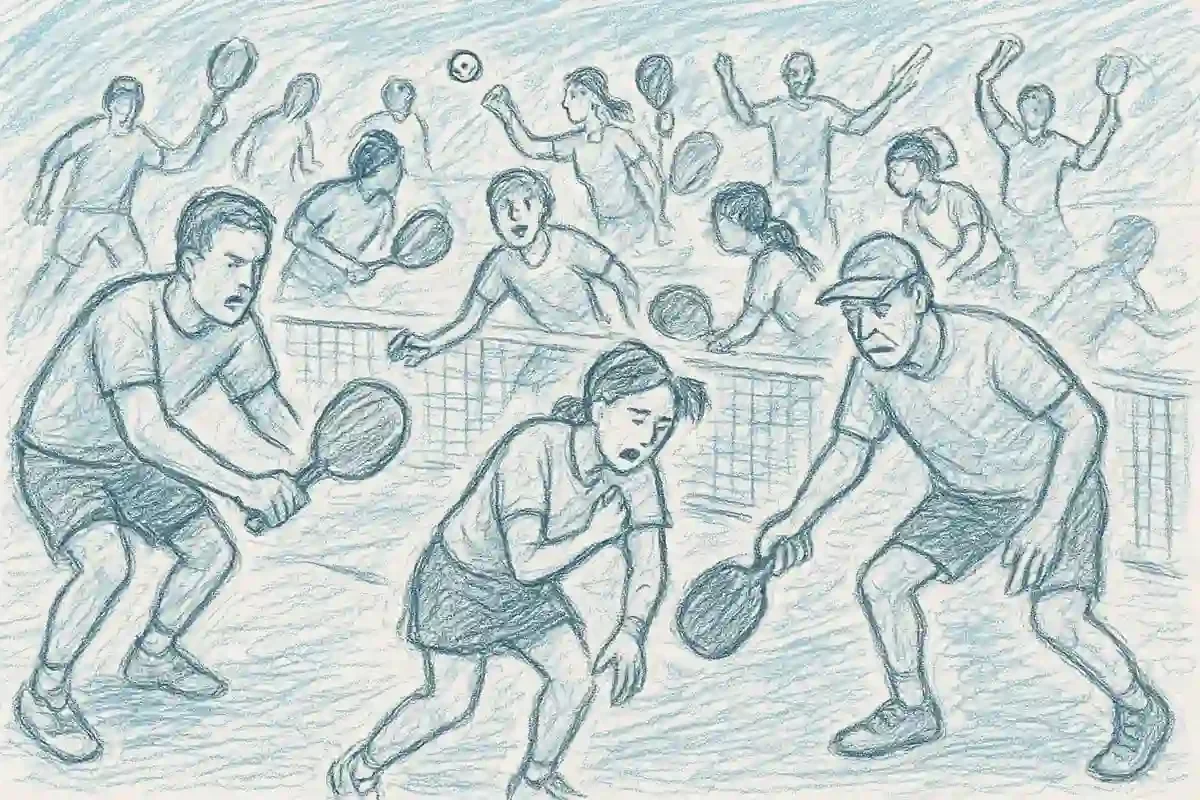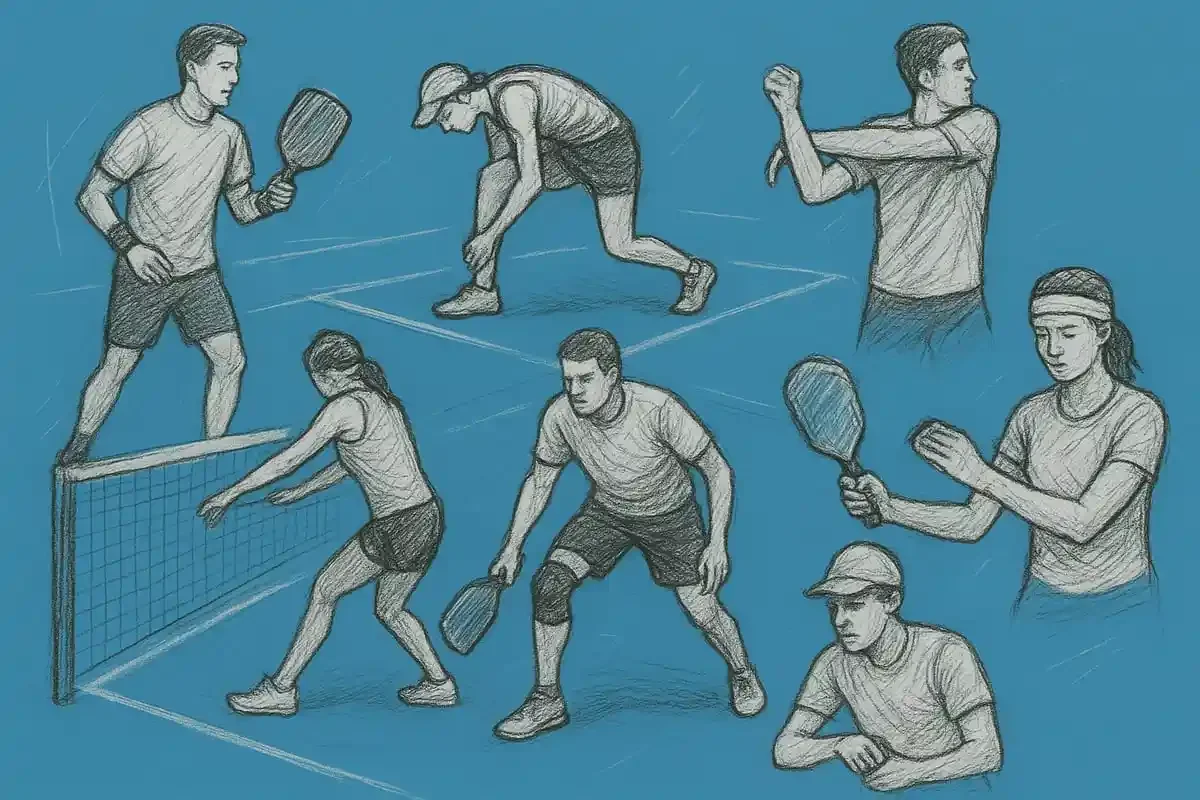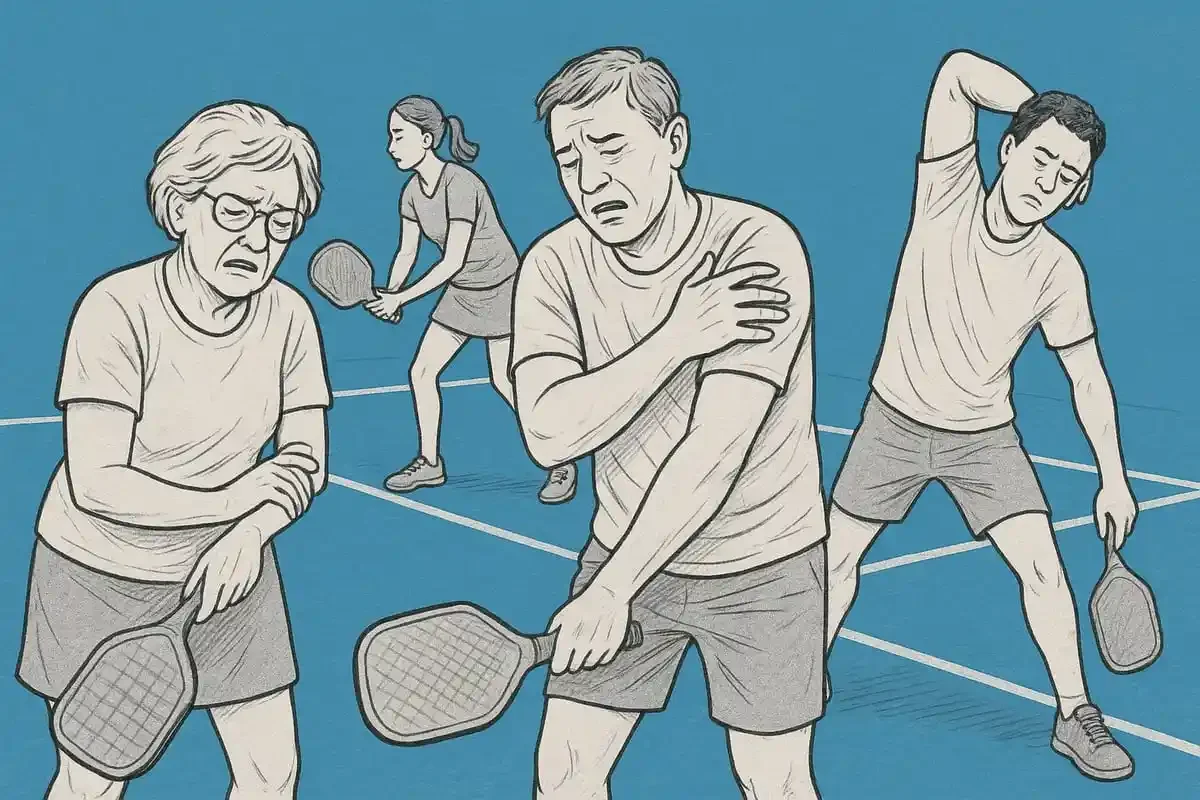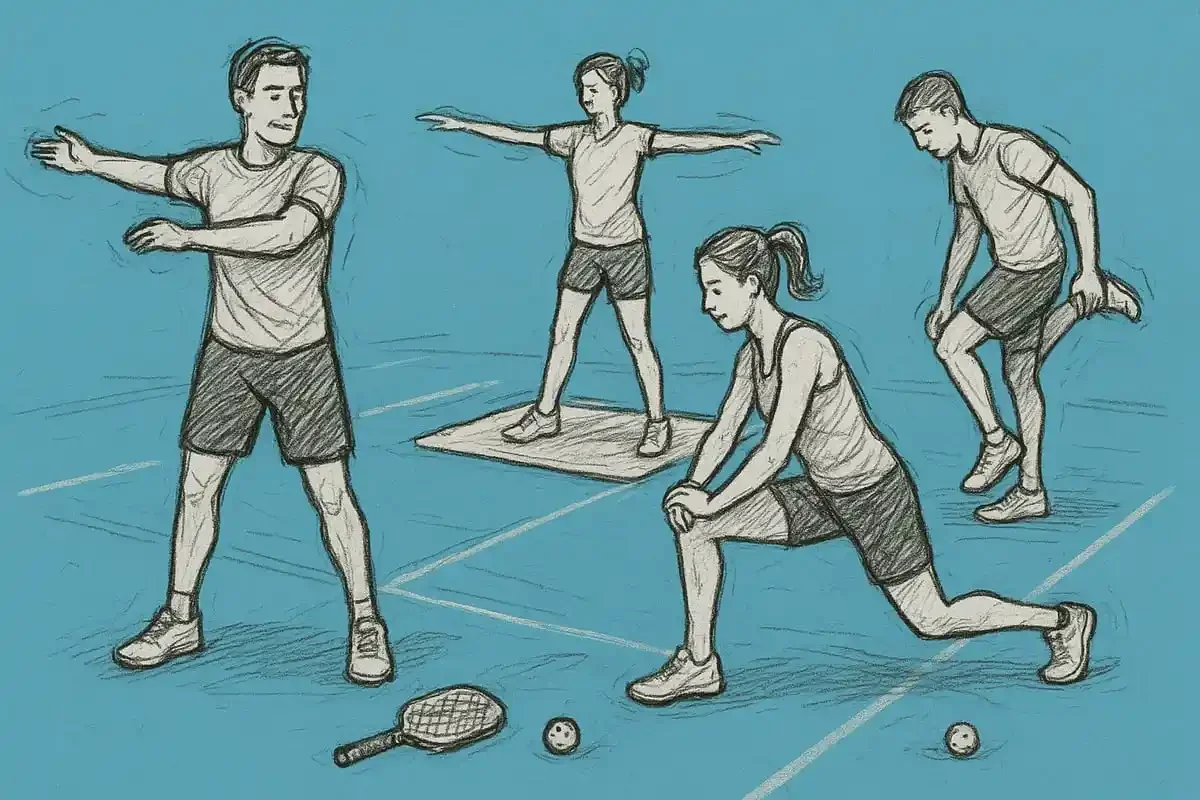7 Common Pickleball Injuries in 2025 and How to Prevent Them
Pickleball has exploded in popularity, drawing players of all ages to courts nationwide. Its rapid growth, especially among older adults, has made it a favorite for both exercise and socializing. Yet, as more people join the fun, a surprising trend is emerging.
Recent data reveals a sharp increase in pickleball injuries, with new patterns developing in 2025. While the sport is known for being accessible and low impact, the risk of injury is on the rise.
This article will break down the seven most common pickleball injuries in 2025, share real statistics, and provide simple prevention tips. Stay informed, play safely, and keep enjoying the game you love.
The Rise of Pickleball Injuries: Trends and Insights for 2025
Pickleball has quickly evolved from a niche pastime to the fastest-growing sport in America. Its appeal cuts across generations, but the most dramatic growth is among adults over 55. This surge has brought together people with diverse backgrounds and fitness levels, creating a dynamic yet sometimes risky environment. More women are playing than ever, and with participation expanding, the landscape of pickleball injuries is changing rapidly.
Recent data reveals just how significant this shift has been. Over 66,000 pickleball injuries were reported in emergency departments from 2013 to 2022, with a sharp increase in the last three years. Fractures make up nearly one-third of all cases, while strains and sprains are also common. Notably, falls account for more than 65 percent of incidents, especially among older adults.
So why are pickleball injuries on the rise? The sport’s easy entry and social nature attract many new, sometimes underprepared, players. Hard court surfaces and the need for quick, multidirectional movements can catch even experienced athletes off guard. Many players skip proper warm-ups or lack the conditioning needed for the repetitive motions involved, increasing their risk. The game's competitive spirit often leads people to push past fatigue or play through pain, further contributing to injury rates.
Pickleball injuries are also unique compared to other racquet sports. The smaller court, distinctive paddle design, and fast pace create a different risk profile. “Pickleball elbow” and Achilles tendon ruptures have become signature injuries. Older adults are especially vulnerable, given natural declines in bone density, tendon strength, and balance. These factors make prevention strategies even more crucial for regular players.
This surge in pickleball injuries has had a noticeable impact on healthcare systems. Emergency departments are seeing more visits for fractures, head injuries, and overuse issues. Orthopedic clinics and sport practitioners report increased demand for their services. These trends highlight the urgent need for community education, preventive programs, and resources to help players of all ages stay healthy and active.
7 Common Pickleball Injuries in 2025 and How to Prevent Them
Pickleball injuries have become a major concern as the sport’s popularity explodes in 2025. Whether you’re a beginner or a seasoned player, understanding the most common injuries is the first step to staying safe. Let’s break down the seven injuries you’re most likely to encounter, explore why they’re so prevalent, and learn how you can prevent them.
1. Wrist Fractures
Wrist fractures top the list of pickleball injuries in 2025, making up nearly 13% of all reported cases. Most wrist injuries occur when players fall and instinctively reach out to break the fall with their hands. This can be especially dangerous for older adults, particularly women who may have osteoporosis, increasing their risk of fractures.
Why are wrist fractures so common in pickleball? The fast-paced, stop-and-go nature of the game creates plenty of opportunities for tripping, slipping, or losing balance. Hard court surfaces make these falls even more hazardous, resulting in a high number of wrist and forearm fractures.
Prevention Strategies:
Learn proper falling techniques to minimize impact on the wrists.
Use wrist guards, especially if you’ve had previous wrist injuries or have reduced bone density.
Improve your balance and reaction time with targeted exercises.
Maintain strong court awareness to avoid tripping hazards and collisions.
Warm up thoroughly before playing.
Older female players are particularly susceptible to wrist fractures due to bone density loss. If you’re concerned about your risk, consider consulting your healthcare provider for a bone density screening.
2. Ankle Sprains
Ankle sprains are the second most frequent pickleball injuries. They often happen during quick lateral movements, sudden pivots, or when stepping awkwardly on the court. The rapid changes in direction that make pickleball exciting also put your ankles at risk, especially if you’re not wearing supportive footwear.
Repetitive play on hard surfaces can tire out the muscles that stabilize your ankle, making sprains more likely. Competitive matches, where players push their limits, see even higher rates of ankle injuries.
Prevention Strategies:
Always wear court-specific shoes with good lateral support and grip.
Strengthen your ankle muscles with balance and resistance exercises.
Incorporate dynamic warm-ups before matches to prepare your joints.
Practice agility drills to improve footwork and reaction time.
Pay attention to court conditions and avoid wet or uneven surfaces.
If you’re new to the sport or returning after a break, start slow and gradually build up the intensity of your games. This approach reduces the risk of overloading your ankles and suffering from sprains.
3. Rotator Cuff Tears and Shoulder Injuries
Shoulder injuries, especially rotator cuff tears, are on the rise among pickleball players. The repetitive swinging and overhead shots required in pickleball put significant strain on the shoulder joint. This can lead to a range of issues, from mild tendinitis to serious tears that may require surgery.
“Pickleball shoulder” is a common term for the pain and dysfunction caused by overuse. Playing multiple games without adequate rest or using improper swing mechanics can increase your risk. Players with a history of shoulder problems need to be particularly cautious.
Prevention Strategies:
Add shoulder strengthening and flexibility exercises to your fitness routine.
Focus on proper technique for serves and overhead shots.
Limit the number of consecutive games you play to prevent fatigue.
Listen to your body and rest if you feel discomfort.
Warm up your shoulders with mobility drills before playing.
If you do experience persistent shoulder pain, seek medical advice early. Early intervention and physical therapy can often prevent the need for more invasive treatments.
4. Achilles Tendon Ruptures
Achilles tendon ruptures are one of the most severe pickleball injuries, sometimes requiring surgery and lengthy rehabilitation. These injuries are most common among older or less-conditioned players, especially during explosive movements like sudden sprints, stops, or lunges for a shot.
The Achilles tendon connects your calf muscles to your heel. When it’s overstressed, especially without proper warm-up or conditioning, it can tear or rupture. This injury can sideline players for months and is notoriously slow to heal.
Prevention Strategies:
Gradually increase your activity intensity rather than jumping into high-intensity matches.
Stretch your calves and Achilles tendons regularly, especially before and after play.
Avoid playing when fatigued or if you feel tightness in your lower legs.
Choose shoes with adequate heel support and cushioning.
Incorporate eccentric calf exercises to build tendon strength.
Sudden changes in direction or explosive sprints, particularly without a proper warm-up, are major culprits. Make stretching and progressive training a non-negotiable part of your routine to keep your Achilles healthy.
5. Knee Injuries (Meniscus Tears, Ligament Sprains)
Knee injuries are a significant concern in pickleball, especially for players with a history of joint problems or arthritis. Meniscus tears and ligament sprains often result from twisting, pivoting, or awkward landings during play. The fast-paced nature of pickleball means your knees are constantly under stress.
Older adults and those carrying extra weight are at greater risk. Even a minor misstep or sudden stop can cause a serious knee injury, taking you off the court for weeks or longer.
Prevention Strategies:
Strengthen your leg and hip muscles to provide better knee support.
Maintain a healthy body weight to reduce joint strain.
Use knee braces or supports if you have a history of knee issues.
Avoid abrupt, jerky movements and focus on controlled footwork.
Warm up with dynamic stretches targeting the knees.
If you feel a sharp pain or hear a popping sound in your knee during play, stop immediately and seek medical attention. Early treatment can prevent long-term damage and help you return to the game sooner.
6. “Pickleball Elbow” (Lateral Epicondylitis)
“Pickleball elbow” is an overuse injury similar to tennis elbow. It’s caused by repetitive paddle swings, especially with improper grip or technique. Symptoms typically include pain on the outside of the elbow, tenderness, and reduced grip strength.
This injury is particularly common among new players or those ramping up their playing frequency. Using a paddle with the wrong grip size or relying too much on wrist flicking can increase your risk.
Prevention Strategies:
Use a paddle with a grip size that matches your hand.
Focus on proper swing mechanics, avoiding excessive wrist movement.
Take breaks between games to allow your arm to recover.
Perform forearm strengthening and stretching exercises.
Alternate hands or playing styles if possible to reduce repetitive strain.
If you start to notice elbow pain, address it early with rest and adjustments to your technique. Simple changes can prevent this nagging injury from derailing your enjoyment of pickleball.
7. Head Injuries and Concussions
While less common, head injuries and concussions are among the most serious pickleball injuries. They typically occur when a player falls and hits their head on the hard court or in collisions with other players. The risk is highest for those over 65, who may have slower reaction times and balance issues.
Emergency departments have seen a rise in closed head injuries related to pickleball, highlighting the need for increased awareness and prevention. Even a mild concussion can have lasting effects, so it’s crucial to take these injuries seriously.
Prevention Strategies:
Work on your balance and coordination with targeted exercises.
Keep the court free of obstacles like stray balls or bags.
Educate all players on safe play and the importance of situational awareness.
Consider wearing soft head protection if you’re at high risk.
Always report and seek care for any head impact, even if symptoms seem minor.
By taking proactive steps, you can enjoy the fun and social benefits of pickleball while drastically reducing your risk of injury.
Age and Gender Factors in Pickleball Injuries
Pickleball injuries are not one-size-fits-all. Age and gender play a huge role in who gets hurt, how, and why. Understanding these patterns can help you stay safe and active on the court.
Age-Related Trends
Older adults are especially vulnerable to pickleball injuries. In fact, players aged 65 and up now account for more than 60% of reported cases. This is not surprising, since bone density and balance often decline with age, making falls and fractures much more likely. According to a recent epidemiology of pickleball injuries analysis, most emergency room visits for pickleball injuries involve older adults, especially those over 65. Their slower reaction times and higher risk of osteoporosis mean even minor slips can lead to serious breaks.
Gender Differences
Gender also shapes the landscape of pickleball injuries. Women experience more fractures, particularly in the wrist and forearm. This is closely tied to higher osteoporosis rates, which weaken bones and increase the risk of breaks after a fall. Men, on the other hand, are more prone to overuse and impact injuries such as shoulder and elbow problems. This may be because men typically play more aggressively or with greater force, leading to repetitive strain and joint stress.
Prevention and Personalized Strategies
Knowing your unique risk profile is the first step to preventing pickleball injuries. New players, and those returning to activity after a break, should start slow and build up strength. For women, especially those with a family history of osteoporosis, bone density screening before starting is a smart move. Men should focus on proper technique and rest to avoid overuse injuries. No matter your age or gender, tailoring your warm-ups, equipment, and training to your needs will help keep you healthy and enjoying the game.
Essential Warm-Up, Conditioning, and Technique Tips
Preparing your body before stepping onto the court is one of the most effective ways to reduce your risk of pickleball injuries. A smart routine blends dynamic warm-ups, targeted conditioning, and proper technique so you can play longer and safer.
Dynamic Warm-Ups for Injury Prevention
Starting each session with a dynamic warm-up is essential for preventing pickleball injuries. Five to ten minutes of light jogging, arm circles, and leg swings prepare your muscles and joints for the demands of the game. Focus on dynamic stretches for your shoulders, ankles, and knees.
Try these warm-up moves:
Shoulder circles and cross-body arm swings
Walking lunges with torso twists
Ankle rolls and calf raises
Research shows that a proper warm-up can cut the risk of strains and sprains by up to 30%. For more detailed routines and expert advice, check out injury prevention strategies for pickleball.
Conditioning and Strength Training
Building a strong and resilient body is key to avoiding pickleball injuries. Regular strength training for your core, legs, and upper body supports the quick movements and pivots required on the court.
Incorporate these elements:
Squats and lunges for leg power
Planks and side planks for core stability
Resistance band exercises for shoulders
Balance and agility drills, such as single-leg stands and ladder footwork, help reduce your risk of falls. Gradually increase the intensity and length of your sessions to allow your body to adapt.
Technique and Equipment Considerations
Mastering proper technique and using the right equipment are crucial for minimizing pickleball injuries. Focus on learning correct footwork to move efficiently and reduce awkward landings.
Key technique tips:
Keep knees slightly bent for better shock absorption
Use your legs and core, not just your arm, for paddle swings
Practice quick, controlled pivots
Choose supportive court shoes with a good grip, and make sure your paddle grip size fits your hand to avoid wrist and elbow strain. Small adjustments can make a big difference in both performance and injury prevention.
When to Seek Professional Help for Pickleball Injuries
Knowing when to seek professional help for pickleball injuries can make all the difference in your long-term recovery and game enjoyment. Ignoring pain or hoping it will go away might lead to bigger problems, so it's important to listen to your body and act early.
Recognizing When to Seek Help
Certain warning signs mean it's time to reach out to a healthcare professional for pickleball injuries. Watch for:
Persistent pain that doesn't improve with rest
Swelling or bruising that seems to get worse
Difficulty bearing weight or moving the affected area
Numbness, tingling, or loss of function
Signs of infection, such as redness or warmth
If any of these symptoms appear, it's wise to stop playing and consult a provider. For more details on what symptoms to watch for, visit When to seek injury care.
The Role of Healthcare Professionals
Early intervention is key to preventing chronic pickleball injuries. Healthcare professionals can diagnose the problem, create a treatment plan, and guide your rehabilitation. Sports medicine doctors, sport chiropractors, and physical therapists all play a role in helping you recover safely and efficiently.
Prompt care can often mean the difference between a quick return to play and a long-term setback. For instance, untreated rotator cuff injuries may eventually require surgery, while early therapy can help you avoid more serious outcomes.
Accessing Resources and Taking Action
Seeking the right care starts with finding experienced providers who understand pickleball injuries. Ask your primary care doctor for a referral, or contact a sports medicine clinic that offers individualized treatment plans. Many communities also offer group rehab or injury prevention workshops, which can help you build strength and confidence as you recover.
Remember, addressing pickleball injuries early helps you stay active and minimizes your risk of complications. Don't hesitate to use available resources and seek expert advice so you can get back on the court safely.
Resources and Community Initiatives for Injury Prevention
Staying safe from pickleball injuries requires support beyond the court. Many local communities now offer injury prevention workshops and clinics, making it easier for players to learn safe techniques and stay active. Community centers often organize balance and strength classes tailored specifically for pickleball players, helping everyone lower their risk of pickleball injuries.
Online resources are also expanding. National and local pickleball associations regularly update their websites with new educational materials and safety guidelines. For those looking for proactive strategies, check out these prehab and injury prevention tips to help you stay ahead of common pickleball injuries.
By joining these programs and fostering a culture of safety, players can enjoy more games with fewer setbacks. Consider participating in ongoing education and skill development to keep yourself and your community strong and injury free.
If you’re finding yourself nursing a sore wrist or shoulder after a few too many pickleball games, you’re definitely not alone, and you don’t have to just tough it out. Taking care of those aches early on can make all the difference in keeping you active and enjoying the game for years to come. At Mountain Health and Performance, our experienced chiropractors know exactly how to help with sports injuries like the ones we covered, whether you’re dealing with a nagging sprain or want to prevent future problems. If you’re ready to move better and play pain free, Book with one of our chiropractors today.

